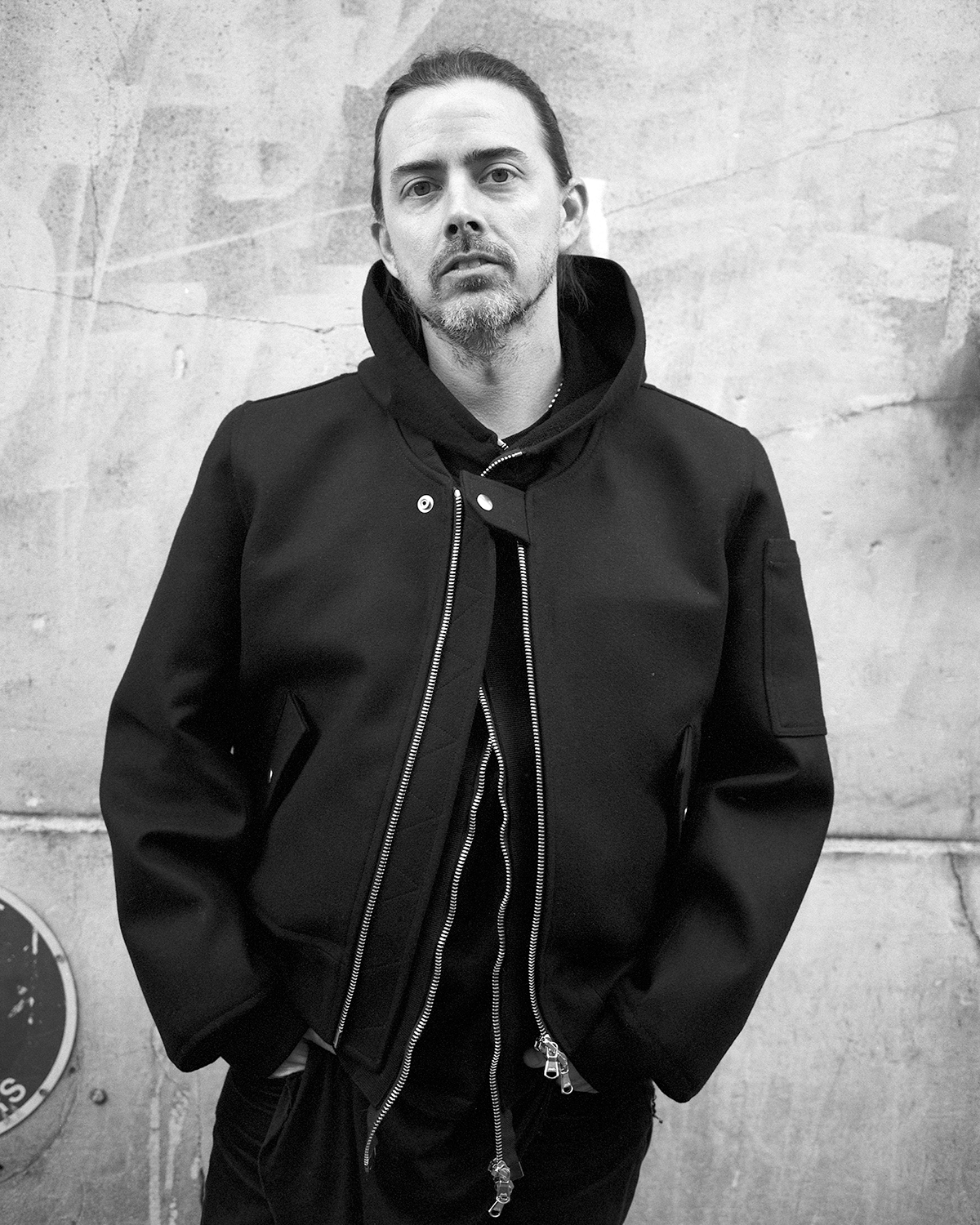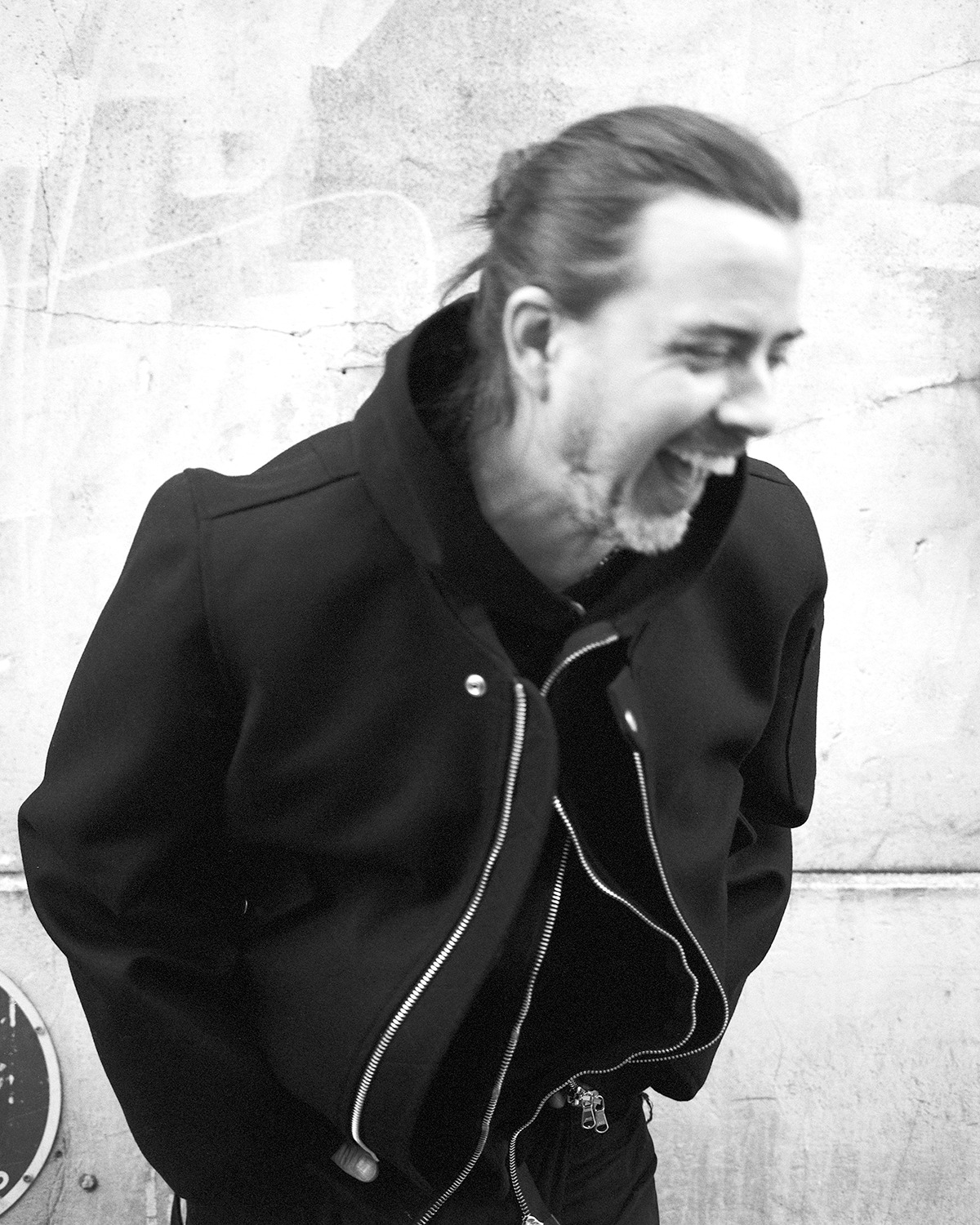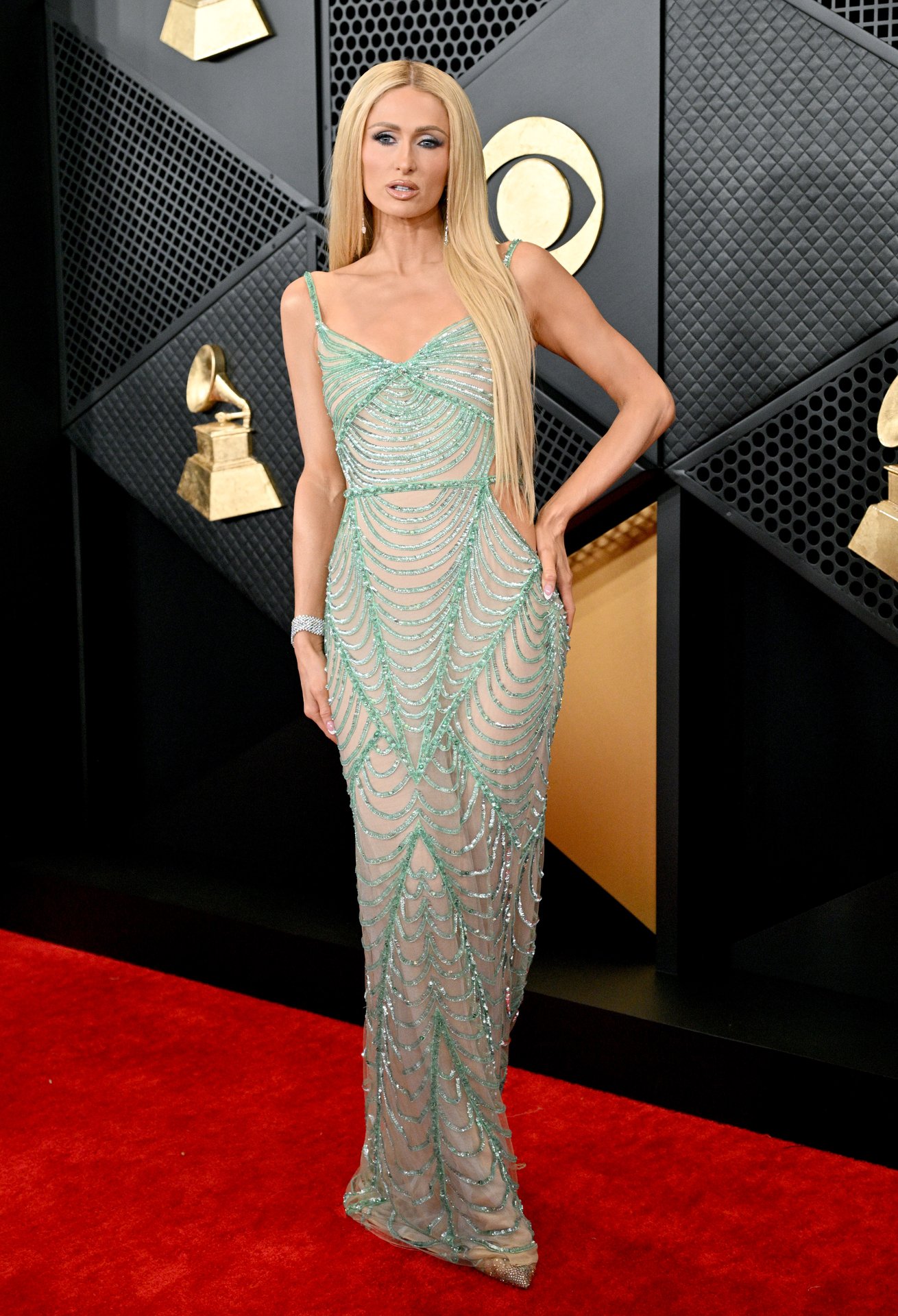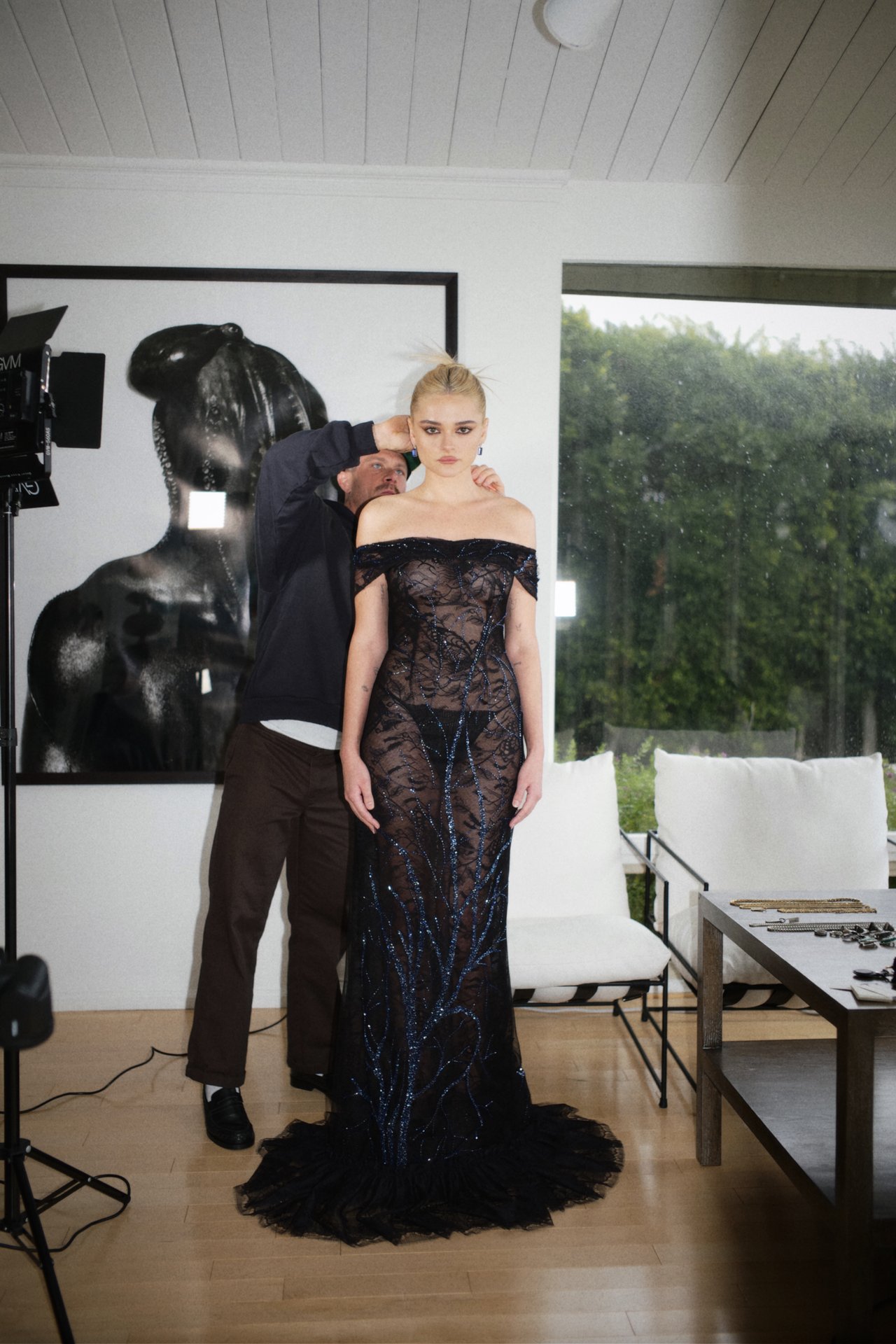JKEEFER Delivers Timeless and Cool Luxury Menswear
February 5, 2024
Lisa Smilor


Joseph “Joey” Keefer just wrapped up Men’s Market, having shown JKEEFER Fall/Winter 2024 – his fifth collection – to buyers in Paris and New York. His Series 04 Spring/Summer 2024 collection will arrive at Nordstrom New York and online this month. Although JKEEFER is a new American menswear brand, Joey’s journey has been a long and well-considered one.
In January 2023, he was invited to join the Interim tier of CFDA membership, which we created to identify and nurture a diverse group of designers who have been in business between one to five years but already demonstrate great promise for a long and successful future within the industry and the organization.
Although your brand is still considered “emerging,” you have extensive experience working in fashion. Please share your journey.
My journey in the world of fashion, which began in 2004, has been driven by my desire and dedication to gain extensive expertise in all facets of the industry. With my extensive foundation in retail and buying, I worked to hone my craft before venturing into the realm of design. I was able to gain invaluable experience alongside renowned designers such as CFDA Award Winner Robert Geller for a number of years before spending time with Tim Hamilton, Siki Im, and later SSENSE. Alongside Samantha McElrath, I co-founded the brand GHSTS in 2010, which we did for a number of years; it led to some interesting opportunities. On the back of GHSTS, I designed a private label assortment for Barneys New York, and was then appointed creative director of Earnest Sewn before they closed.
I took a roundabout way to become a designer. I worked my way up through retail, first with Up Against The Wall and Commander Salamander in Washington, DC, then I went to Denim Bar – where I continued to learn about buying and the business. Soon thereafter, I moved to Philadelphia to work together with friends on a boutique called Deep Sleep; through the shop, I was recruited to join Urban Outfitters. It wasn’t long before I left and moved to New York, where I began working at Odin NY, which is where I first met Robert Geller.
I was raised by a single mother who encouraged my creativity. She was artistic herself and made sure to give my brother and I “space” to figure out what we wanted to do. As a kid I would draw cars, which is what I first wanted to design, then it was skateboard graphics, then it was skate brands. Later in life, I realized that I had been drawing simple flats and creating line sheets back then. It was encouraging, so when I decided to go into fashion – without having attended college, let alone fashion school – the confidence in my decision was supported by that foundation.
What do you find most rewarding? What keeps you inspired?
The most rewarding part of being a designer is seeing people react to and wear what you create. It’s so inspiring to be able to tell various stories through clothing – which is so closely tied to identity for so many – and to be able to be a part of people’s lives through what we create….it is an incredible gift. Seeing people wear garments that I’ve designed is honestly one of the most exciting things for me. I have strong roots in subcultures that are constantly evolving and full of energy, and capturing that, infusing my clothing with that, is something that continues to inspire and drive me.
What challenges face smaller brands today? What, if any, are unique to menswear?
Today’s challenges are vast. We’re dealing with immense changes in the retail environment: the consumer is shifting, the buying behaviors are shifting, trends are becoming bigger but faster, and it’s very hard to keep up. Also, there are more brands and designers than ever before, so it is becoming more difficult to break above the wave. Cashflow and visibility are two of my most challenging elements currently. Social media initially helped a lot with visibility for small brands, but it has become a huge challenge to crack through now. Being able to be a part of global fashion weeks with presentations or shows requires vast amounts of money and bandwidth, but are necessary in order to be seen. With regard to how these challenges affect the men’s business, it’s felt differently. The hunger for trend is insatiable at times. The coverage and opportunity to be seen has shrunk considerably as we don’t have as many media outlets. You now need celebrity/athlete/music co-signs to crack through. Additionally, there isn’t a specific week in New York that aligns with the global men’s markets. You have to be clever and adaptable while maintaining a strong sense of who you are and retaining clarity for your brand.

You just showed your collection in Paris and New York. Why both?
New York is home. I love being here, and showing the collection here, and having this as our base. As a menswear brand, we do focus on Paris for sales as the opportunities for global retailers is far higher. Additionally, the energy of the Marais neighborhood during men’s fashion week is infectious and truly makes you feel that you are part of the global fashion community in a very impactful way. So many of the showrooms are in small, street-facing galleries – which means that buyers, designers, sales directors etc. are out on the street chatting and connecting all day, so it feels very alive. I do wish that we were able to capture more of that here in New York. For JKEEFER, I will continue to work with the New York schedule to figure out interesting ways of presenting the collection here. I did my first ever presentation this past September at [legendary punk bar] Saint Vitus in Brooklyn and we had three bands play. It was a true expression of what the brand is….and that could only happen here.
Tell us more about your Spring/Summer 2024 collection and presentation – which was GREAT!
The collection is a testament to my dedication to a strong and unique perspective, with a focus on timelessness and seasonal excitement. I wanted to capture my core inspiration – the DC hardcore and punk scene – which was incredibly formative to my life. The energy, attitude and drive from that scene fuels my process and mentality. The idea is that if you want to do something you have to figure it out, learn it, and do it the right way to create something meaningful and impactful.
The collection’s debut showing at NYFW was held at St. Vitus, along with three bands: Pissed Jeans, Doubt It! and Roll Call. It paid homage and was completely authentic to the brand’s vision. For the presentation, we collaborated with Good Art HLYWD on sterling silver punk pins and Dr. Martens generously provided us with footwear. After the presentation, the bands’ show opened up to fans, creating an electric energy and a sense of true community. The ethos and energy of the scene is in the veins of my collection. Seasonally, I will continue to explore points of inspiration and storytelling as the collection grows and pushes the aesthetic. The collection is designed to be a modern uniform – it is for anyone but not everyone – it is unpretentious luxury.
What would you like to see in the way of change for the fashion industry?
I’d love to see trends slow down a bit; it feels completely whirlwind right now. I’d love to see more attention on craft, quality, and storytelling. Storytelling is such a beautiful thing – and a big part of what defines fashion for me. Clothes are clothes, but the story of the designer and the inspiration are so key to what separates us….but can also be a uniting element.
Not to sound like a curmudgeon, but I would like to see the industry evolve in a way that is less celebrity and conglomerate focused. In terms of media coverage, there are so many incredibly talented young and independent designers working today that could use more visibility. I’d love to see more opportunity for young designers coming out of school or other careers to find positions within the industry wherein they can learn and gain experience. It is getting harder and harder to find jobs within our industry, and it’s leaving many talented people behind. In addition, I would love to see more investment into smaller brands. I think about sports, and how owners in sport are incentivised to invest in their “product” (on-field performance, stadium etc.) because that investment reaps benefits at the gate and through merchandising sales. Investment into brands to create stronger product, better presentations/shows/campaigns (our on-field performance) inevitably leads to increases in visibility and sales.
What advice do you have for today’s students about to embark on their careers?
The best advice I can give any young designer is this: Listen, a lot – and get a job in retail. Working on the retail floor is the ultimate experience in learning how consumers shop and interact with garments. Being an attentive and active salesperson will provide you with endless information that should always inform your design processes. Learning on the floor is something that I valued so much in my career and has allowed me an ability to balance commercial and artistic in my design work. When you’re a designer and you’re in the workplace – or have your own collection – always spend time with the salespeople at your [retail stores]…they’re your best most direct information, as well as your biggest advocates.
Portraits by Ellis Scott

